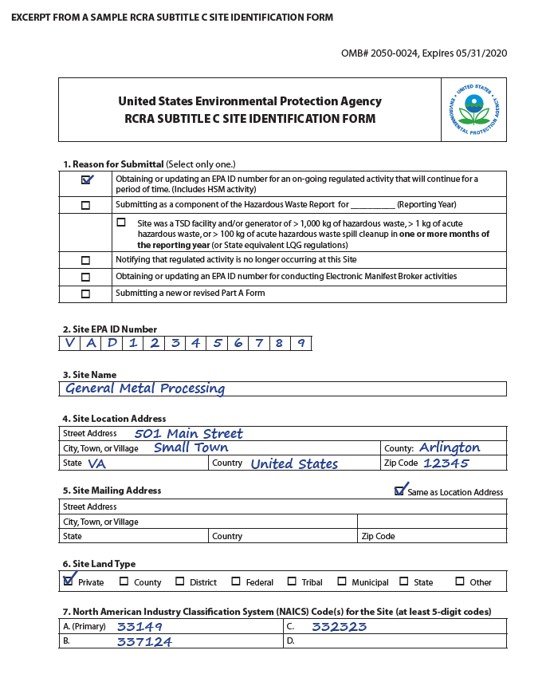Re-Notification Requirement for Small Quantity Generators
The 2016 Hazardous Waste Generator Improvements Rule finalized a requirement for all small quantity generators (SQGs) of hazardous waste to re-notify EPA of their hazardous waste activities every four years. The purpose of the re-notification requirement is to improve the SQG universe data and to maintain more accurate data into the future for outreach, compliance assistance and oversight activities.
On this page:
- Who are small quantity generators?
- What do small quantity generators need to do and when?
- State resources
- Outreach materials
Who are small quantity generators?
Small quantity generators are those facilities that generate more than 100 kilograms, but less than 1,000 kilograms of hazardous waste per month. Find more information for more information about hazardous waste generator categories.
What do small quantity generators need to do and when?
SQGs are now required to re-notify EPA or their state environmental agency as to their generator status every four years by completing and submitting the Notification of Resource Conservation and Recovery Act (RCRA) Subtitle C Activities (Site Identification Form) in full, also known as EPA Form 8700-12, or state equivalent.
- Find the federal paper form here.
- Many states have opted into MyRCRAID. MyRCRAID is an electronic reporting system for submitting the EPA Site ID form. We encourage SQGs to use MyRCRAID to submit the re-notification online if that is an option in your state. SQGs can find more information about MyRCRAID here and learn how to submit the re-notification online.
The next re-notification is due by September 1, 2025, and then every four years thereafter i.e., September 1, 2029, September 1, 2033, etc.
This re-notification requirement is currently effective in authorized states that have adopted the Generator Improvements Rule, as well as non-authorized states (Iowa and Alaska), Indian Country and most U.S. Territories. Please refer to EPA’s map of where the Generator Improvements Rule is currently in effect.
Note: EPA considers SQG submittal of the Site ID form (in full) anytime within the four years before the deadline to meet this requirement. SQGs should contact their state to ensure this requirement is effective in their state as well as whether their state requires more frequent re-notification than every four years.
State Resources
- Implementation Memo: EPA issued a memo to address several questions asked by states and EPA regions about the implementation of the requirement for SQGs to re-notify as active generators as promulgated in the November 2016 Hazardous Waste Generator Improvements final rule. Read through that memo here (pdf)(236 KB).
-
SQG Data Cleanup Instructions: The processes outlined on this webpage are intended to assist states that would like to clean up their SQG data prior to the September 1, 2025, SQG re-notification deadline by identifying SQG sites in the database that are no longer conducting hazardous waste generator activities (e.g., gone out of business) or have changed their generator category without notifying EPA or their state.
Outreach Materials
- SQG email language:
Sample email language (docx)
that states and EPA Regions can use to announce to their SQGs that they need to re-notify.
- SQG email language translated into languages commonly found in the United States.
- SQG postcards: Postcards for states and EPA Regions to send out to SQGs announcing they need to re-notify.
- SQG postcard translated into languages commonly found in the United States.
- TSDF handouts: Handouts that TSDFs can use to announce to their SQG customers that SQGs need to re-notify.
- TSDF handout translated into languages commonly found in the United States.

